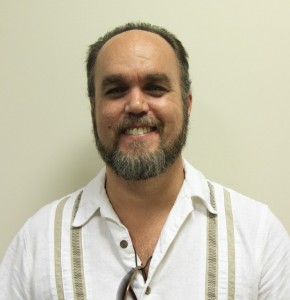
I don’t remember when I first heard of The Angolite, the only uncensored prison publication in the country. It was sometime during the late eighties. Since 1976, prisoners incarcerated at Louisiana’s notorious Angola Prison produced the magazine without censorship. The writers revealed the horrible conditions of the prison, shedding light on sexual slavery, murders and corruption.
The story that I most remember was about the gladiatorial games organized by inmates and supported by guards. Both prisoners and employees gambled extensively on the fights, which often involved weapons and improvised armor. It must have seemed surreal to people in the “free world” to read about this Mad Max–like dystopia, but to me it made perfect sense.
At the time I was at Alto, a hyper-violent youth prison in north Georgia. It was known as gladiator school, and though we didn’t have organized combat, there was a culture among the prisoners and guards supporting the belief that violence was normal. Guards would often turn a blind eye to assaults, robberies and other crimes. At times they would facilitate fights by letting inmates come together to settle their differences by combat.
This kind of violence is still alive and well in the United States. A few days ago The Wall Street Journal reported that the Department of Justice has opened an investigation into the 2008 death of 18-year-old Christopher Robinson. A week after the crime, The Village Voice reported Robinson was left to bleed to death over a 12-hour period after suffering a brutal beating. Last year, two guards pled guilty to running “The Program,” a plan to allow a gang of inmates, known as “The Team,” to extort other prisoners and administer beatings to those who failed to cooperate. A New York Daily News article makes the point that some of the inmates involved received 10-year sentences, while the two guards got “sweetheart” deals of less than two years. Robinson had refused to give the gang his commissary card.
Despite the New York Corrections Department’s assertion that juveniles are safer today because of personnel changes and new safety measures, similar stories continue to come out of the Robert N. Davoren Center where juveniles are held. The Journal reports that at least two lawsuits are moving through the courts brought by the Legal Aid Society, a New York-based not for profit organization.
Attorney Mary Lynee Werlwas is quoted in the Journal as saying, “I know as recently as last week we were getting complaints from inmates. These are people who have never been incarcerated before, and they're giving us the same stories we've heard for five years or more…The hallmark of 'the program' is that corrections officers are deputizing inmates to do their jobs…We've not seen anything change there."
Based on my own experience, I tend to believe the latest reports. Officials will deny wrongdoing and mistreatment, and may in fact be ignorant of it, until irrefutable evidence is brought against them. Then they will promise to make the necessary changes, assure the public that all is well and start the cycle of denial over again. Unfortunately, these places are at the bottom of society and the prisoners are outside the moral sphere of most citizens. That must change.

My son was also at Alto. he was attacked by a group of inmates that a guard let into his cell. If it had not been for another inmate who called me under my son’s name I would not have even known he was in intensive care. the center for human rights investigated the situation and my son was transfered to another prison. the guard only got fired as a result of participating in an attempt to murder my son. they slit his throat and almost died.
I am sorry to hear about your son Connie. When did this happen? As is often the case, crimes committed against prisoners are not dealt with as seriously as those against other citizens.
it was years ago during the first few years of his incarceration. He was 15 when he was incarcerated 14 years ago. He is up for parole consideration now and will be considered in August we are told. He had never been arrested before. He was tried as an adult and sentenced to life. Will you write to my son and consider supporting him with letters to the parole board?
In Ruiz V. Estelle Judge Justice (real name) abolished using building tenders (inmates) to establish and maintain order in the prisons in Texas. Prison and youth detention facilities need to know that this is illegal.
I feel that in this case they were quite aware that what they were doing is illegal. They just didn’t care.